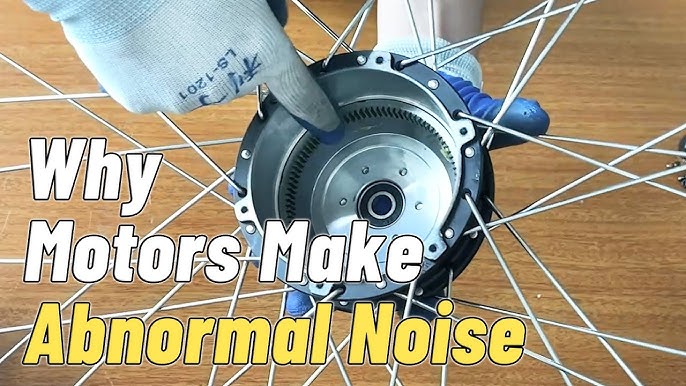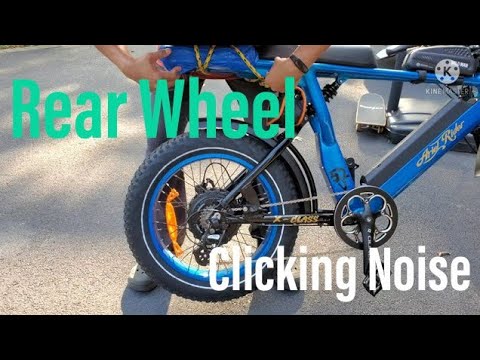Are you an electric bike owner who is experiencing unusual noises coming from your bike’s motor? Don’t worry, we’ve got you covered! In this article, we will provide you with the necessary steps to troubleshoot and address these pesky noises. Our goal is to empower both new and experienced riders with easy-to-follow guidelines and expert advice, ensuring that your e-bike not only performs at its best but also lasts longer. So, if you’re ready to tackle the issue head-on, let’s dive into the world of troubleshooting your electric bike’s motor noises!
How to troubleshoot unusual noises coming from your electric bike’s motor
If your electric bike’s motor is making unusual noises, it’s important to address the issue promptly to ensure the longevity and performance of your bike. In this guide, we will walk you through some troubleshooting steps to help you identify and resolve the issue.
Inspect for loose or damaged parts
The first step in troubleshooting unusual noises is to inspect your electric bike for any loose or damaged parts. Start by checking the connection points of the motor to the frame of the bike. Ensure that all bolts and fasteners are properly tightened. If you notice any loose parts, tighten them securely. Additionally, inspect for any visible damage, such as cracks or breaks, in the motor housing or other components. If you notice any significant damage, it may be necessary to replace the affected part.
Check for foreign objects
Unusual noises coming from your electric bike’s motor may also be caused by foreign objects lodged within the motor or other components. Carefully inspect the motor and surrounding areas for any debris, such as twigs, leaves, or small rocks. If you find any foreign objects, carefully remove them to eliminate the source of the noise.

Examine the chain and sprocket
A loose or misaligned chain can cause rattling or grinding noises in your electric bike’s motor. To examine the chain, start by lifting the rear wheel of your bike off the ground. Rotate the pedals and observe the movement of the chain as it passes through the sprocket. Ensure that the chain is properly tensioned and aligned with the sprocket. If necessary, adjust the tension or alignment according to the manufacturer’s guidelines. A well-maintained and properly adjusted chain will minimize noise and ensure smooth operation of the motor.
Inspect the brake rotors and pads
Unusual noises can also be attributed to worn-out or misaligned brake rotors and pads. To examine the brake rotors, visually inspect them for any signs of wear, such as deep grooves or uneven surfaces. Additionally, check the brake pads for thickness and even wear. If the brake rotors or pads appear worn or damaged, consider replacing them to eliminate the noise.

Check the belt or chain tension
If your electric bike is equipped with a belt or chain drive system, improper tension can lead to unusual noises in the motor. To check the tension, refer to the manufacturer’s guidelines and make any necessary adjustments. Proper tension will not only eliminate noise but also ensure efficient power transfer from the motor to the drivetrain.
Examine the bearings
Faulty bearings can cause grinding or whirring noises in the motor. To examine the bearings, you may need to disassemble the motor or seek professional assistance. Look for any signs of wear, roughness, or excessive play in the bearings. If you suspect bearing issues, it’s recommended to replace them with new ones to ensure smooth and silent operation of the motor.
Check the motor mounting
Loose motor mounting can lead to vibrations and unusual noises. Inspect the motor mounting points and ensure that they are securely fastened to the frame of the bike. If any mounting points are loose, tighten them to eliminate the source of noise and vibrations.
Inspect the battery connections
Loose or corroded battery connections can cause unusual noises in the motor. Ensure that the battery is properly connected to the bike and that the terminals are clean and free from corrosion. If necessary, clean the terminals with a soft brush or cloth and tighten the connections securely. Proper battery connections will ensure a consistent power supply to the motor, reducing the chances of noise issues.

Examine the controller
The controller is an essential component of the electric bike’s motor system and can be a potential source of noise if it malfunctions. Inspect the controller for any visible damage or loose connections. If you suspect an issue with the controller, it may be necessary to consult a professional or contact the manufacturer for further assistance.
Check for water damage
Exposure to water or moisture can cause electrical components to malfunction, resulting in unusual noises. Check for any signs of water damage, such as corrosion or rust, on the motor and its surrounding components. If water damage is present, it’s important to address it promptly to prevent further damage and potential safety hazards. In such cases, it’s advisable to consult a professional for assistance.
By following these troubleshooting steps, you can identify and resolve the unusual noises coming from your electric bike’s motor. Remember, proper maintenance and regular inspections are key to ensuring the longevity and optimal performance of your e-bike. Happy riding!




